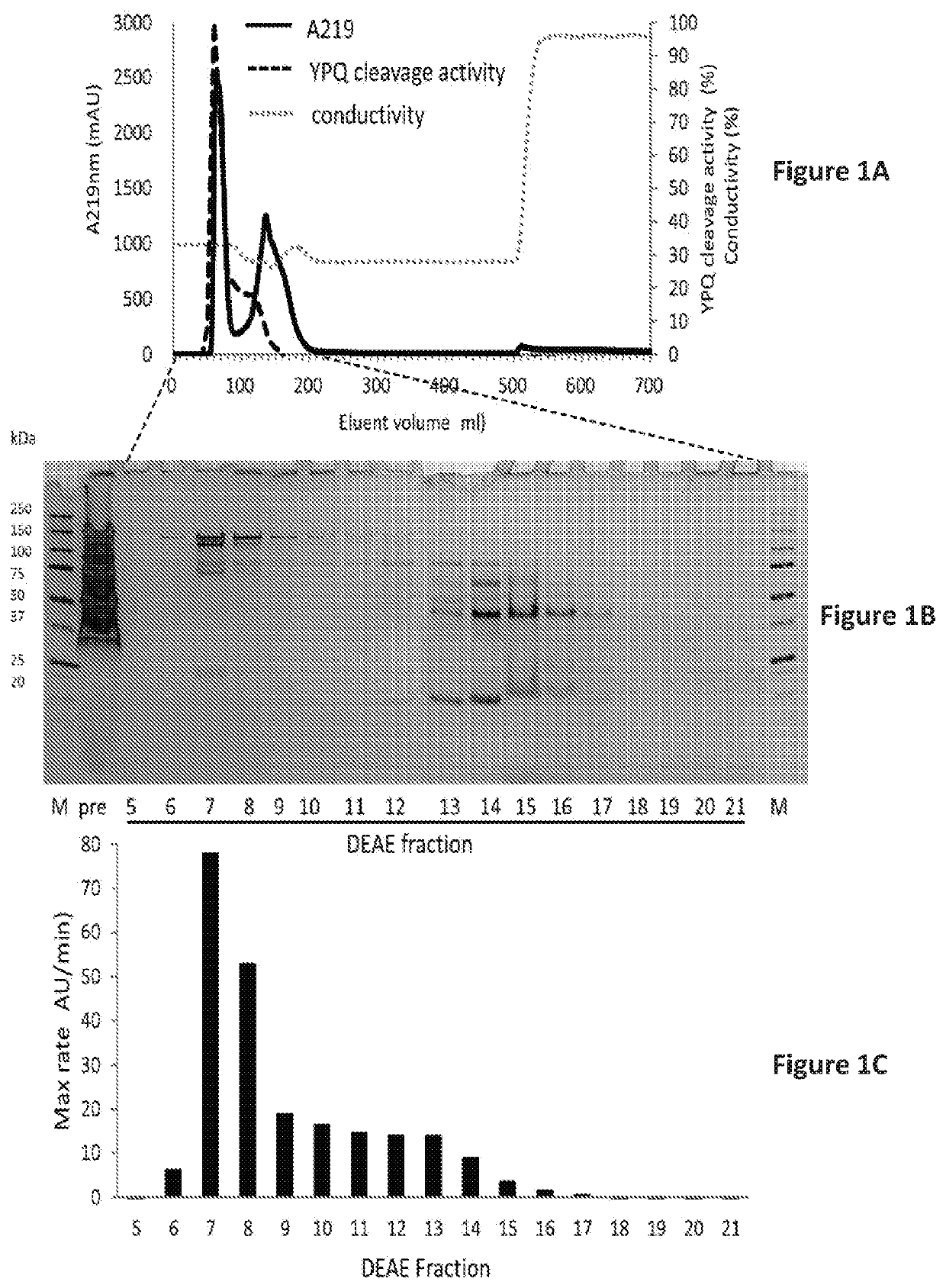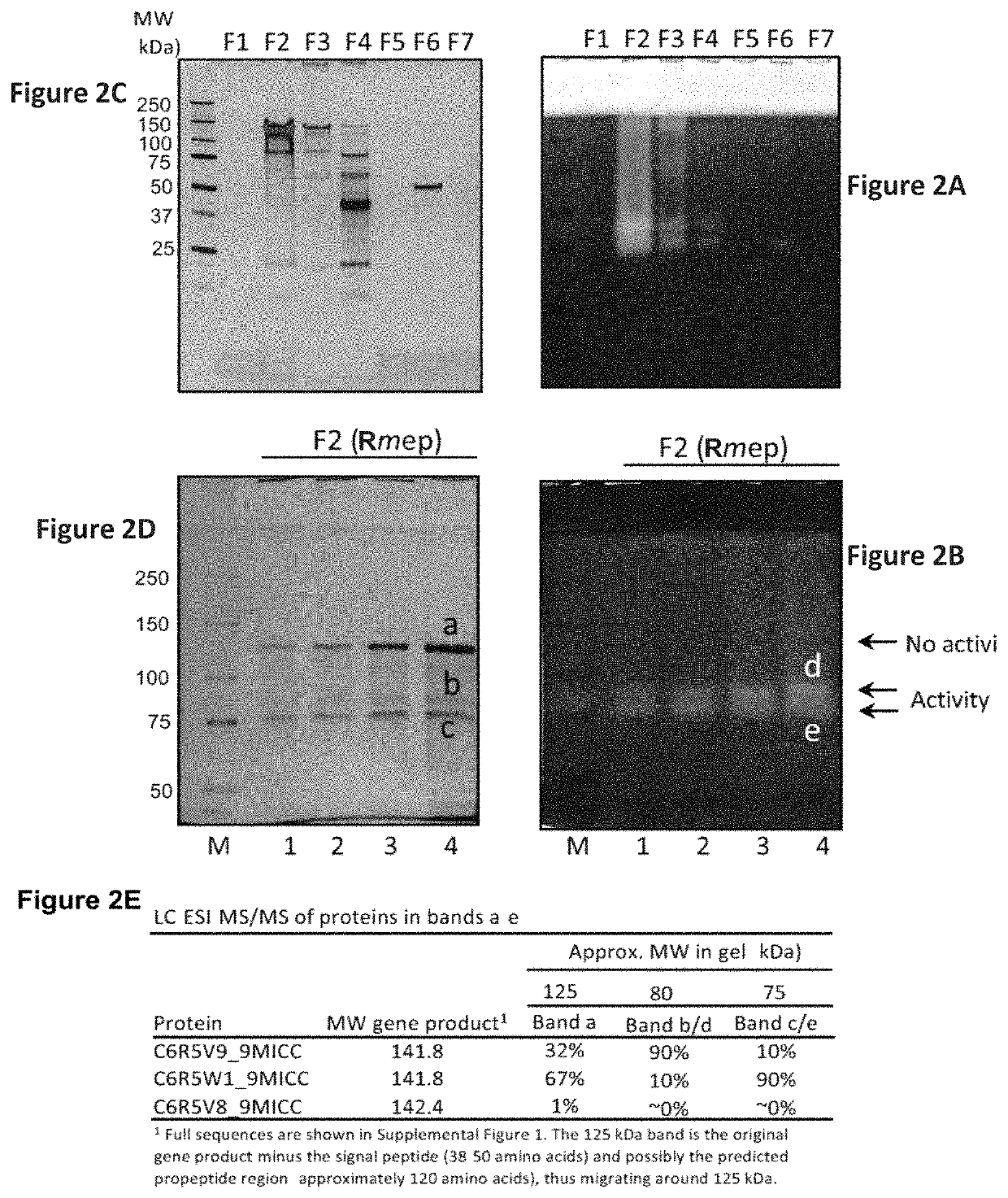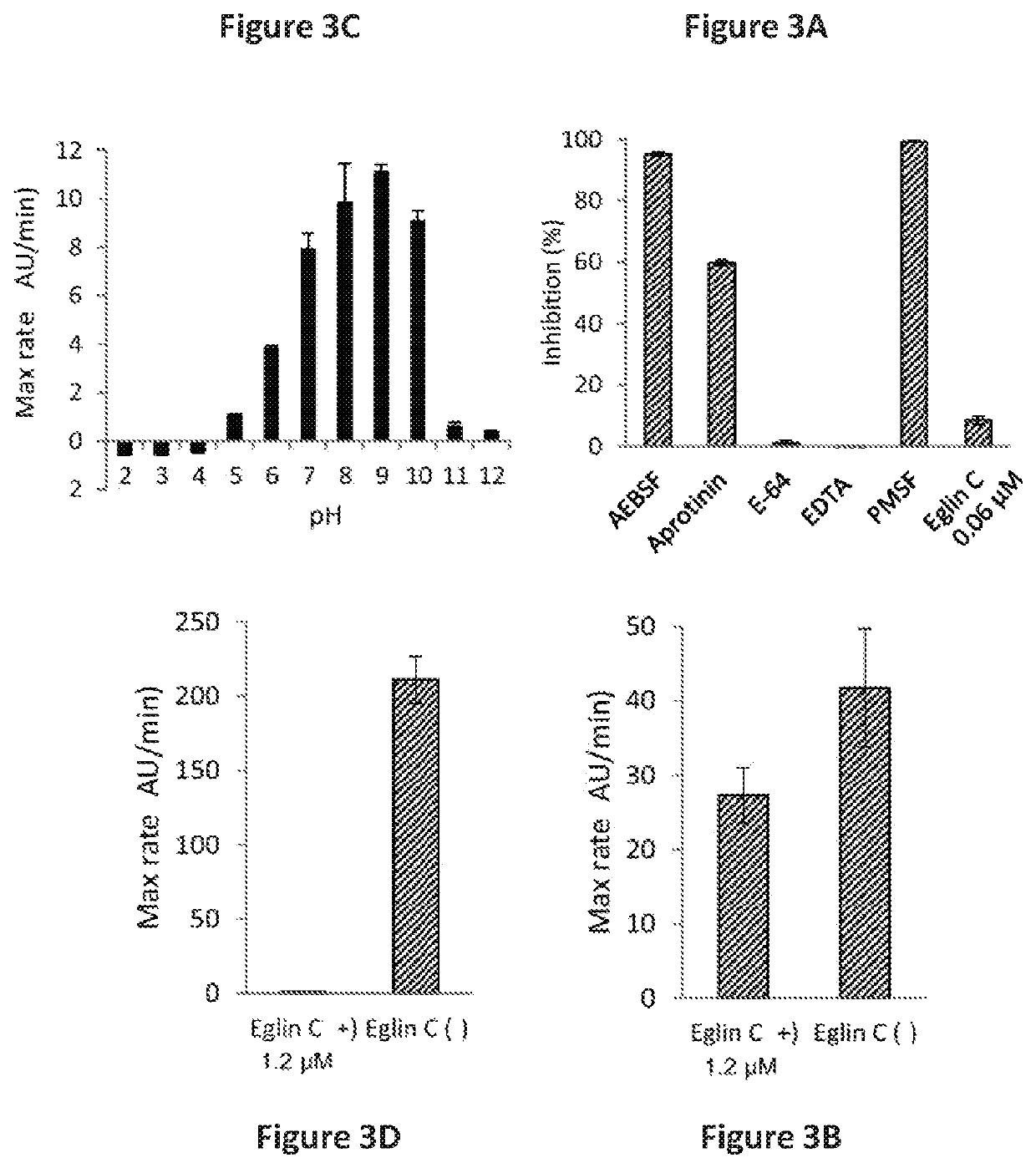Rothia subtilisins, S8A family proteases, as therapeutic enzymes for application in gluten intolerance disorders
a technology of proteases and rothia, which is applied in the field of gluten intolerance disorders, can solve the problems of bacteria that cannot replicate and are not viable, and achieve the effects of improving the clinical symptoms of a subject, and reducing the risk of infection
- Summary
- Abstract
- Description
- Claims
- Application Information
AI Technical Summary
Benefits of technology
Problems solved by technology
Method used
Image
Examples
example 4
on of Non-Viable Bacteria Composition Having Gluten Degrading Activity
Methods
[0558]Bacterial strains—Two gluten-degrading P. aeruginosa strains (FA-10 and FA-13) were isolated from human feces, which is described herein. The isolation and characterization of gluten-degrading Rothia mucilaginosa and R. aeria (WSA-8) from human saliva samples has been described herein. The R. mucilaginosa strain used in the present study was obtained from the American Type Culture Collection (ATCC strain 25296).
[0559]Bacteria cell inactivation—The two P. aeruginosa isolates, R. mucilaginosa and R. aeria strains were cultured aerobically on Brucella agar plates (Hardy Diagnostics, Santa Monica, Calif.) at 37° C. After 48 h incubation, cells were harvested with a sterile cotton swab and diluted to an OD620 of 1.2 in either 1 ml of 70% ethanol (EtOH) or in 1 ml of saliva ion buffer (SIB, control) containing 50 mM KCl, 1.5 mM potassium phosphate, 1 mM CaCl2 and 0.1 mM MgCl2, pH 7.0. Suspensions were incub...
example 1
REFERENCES FOR EXAMPLE 1
[0563]1. Abadie V, et al. Integration of genetic and immunological insights into a model of celiac disease pathogenesis. Annu Rev Immunol 2011; 29:493-525.[0564]2. Schuppan D, et al. Celiac disease: from pathogenesis to novel therapies. Gastroenterology 2009; 137:1912-33.[0565]3. Abadie V, et al. Intraepithelial lymphocytes in celiac disease immunopathology. Semin Immunopathol 2012; 34:551-66.[0566]4. Shah S, et al. Patient perception of treatment burden is high in celiac disease compared with other common conditions. Am J Gastroenterol 2014; 109:1304-11.[0567]5. Norsa L, et al. Gluten-free diet or alternative therapy: a survey on what parents of celiac children want. Int J Food Sci Nutr 2015; 66:590-4.[0568]6. Rubio-Tapia et al. ACG clinical guidelines: diagnosis and management of celiac disease. Am J Gastroenterol 2013; 108:656-76; quiz 677.[0569]7. Sollid L M, and Khosla C. Novel therapies for coeliac disease. J Intern Med 2011; 269:604-13.[0570]8. Kaukine...
example 2
REFERENCES FOR EXAMPLE 2
[0610]1. Zamakhchari M, et al. Identification of Rothia bacteria as gluten-degrading natural colonizers of the upper gastro-intestinal tract. PLoS One 2011; 6:e24455.[0611]2. Helmerhorst E J, and Wei G. Experimental Strategy to Discover Microbes with Gluten-degrading Enzyme Activities. Proc SPIE Int Soc Opt Eng 2014; 9112.[0612]3. Wei G, et al. Identification of food-grade subtilisins as gluten-degrading enzymes to treat celiac disease. Am J Physiol Gastrointest Liver Physiol 2016; 311:G571-G580.[0613]4. Siezen R J, and Leunissen J A. Subtilases: the superfamily of subtilisin-like serine proteases. Protein Sci 1997; 6:501-23.[0614]5. Siezen R J, et al. Evolution of prokaryotic subtilases: genome-wide analysis reveals novel subfamilies with different catalytic residues. Proteins 2007; 67:681-94.[0615]6. Osman A A, et al. A monoclonal antibody that recognizes a potential coeliac-toxic repetitive pentapeptide epitope in gliadins. Eur J Gastroenterol Hepatol 2001...
PUM
| Property | Measurement | Unit |
|---|---|---|
| pH | aaaaa | aaaaa |
| hydrophobic | aaaaa | aaaaa |
| pH | aaaaa | aaaaa |
Abstract
Description
Claims
Application Information
 Login to View More
Login to View More - R&D
- Intellectual Property
- Life Sciences
- Materials
- Tech Scout
- Unparalleled Data Quality
- Higher Quality Content
- 60% Fewer Hallucinations
Browse by: Latest US Patents, China's latest patents, Technical Efficacy Thesaurus, Application Domain, Technology Topic, Popular Technical Reports.
© 2025 PatSnap. All rights reserved.Legal|Privacy policy|Modern Slavery Act Transparency Statement|Sitemap|About US| Contact US: help@patsnap.com



